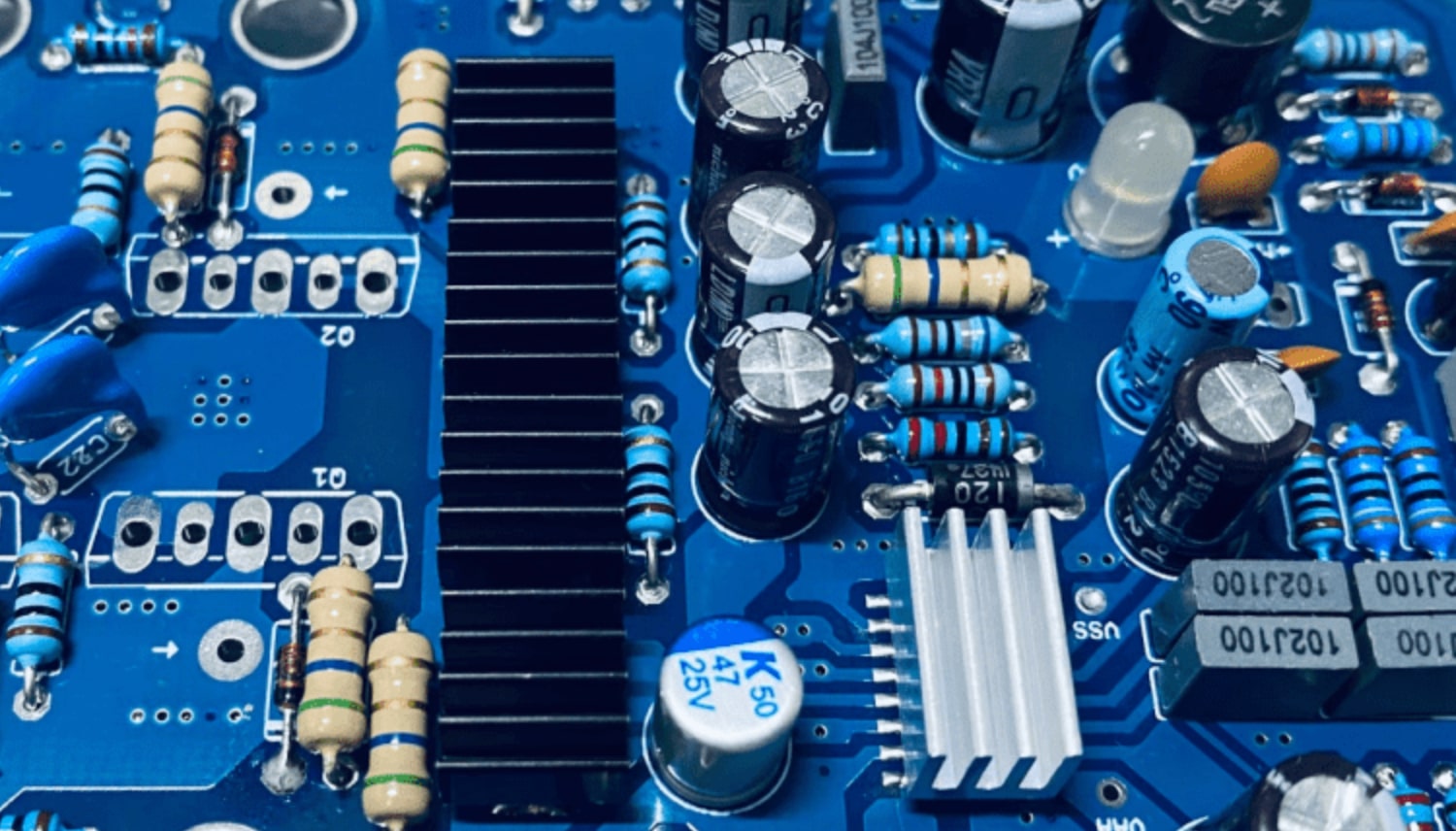
Functions and Characteristics of Amplifier PCB
What is Amplifier PCB?
A customized printed circuit board made to hold all of the elements and connections needed for creating radio frequency, and audio amps is known as an amplifier PCB. It acts as the framework for adding numerous parts required to complete the amplifier circuit. The amplifier PCBs are a vital component that provides the amplifier’s circuit with a well-organized architecture, enables appropriate signal enhancement, and guarantees dependable performance. These printed circuit boards are available in various configurations to satisfy the unique needs of diverse amplifier uses, including RF, operational, and sound drivers.
Key Functionality Features of an Amplifier PCB
Boosting the Signal: The primary function of amplifier PCBs is to boost feeble input audio signals, which might come from various origins, such as a musical device, mic, or any other device. The printed circuit boards facilitate the amplifying mechanism, guaranteeing that the generated signal is greater than the original input signals.
Minimal Noise Generating Architecture: To provide an enhanced signal that is as unaltered and interference-free as possible, a superior amplifier PCB is made to reduce electrical noise. Cutting unwanted interference requires precise component positioning, signal distribution, and shielding.
Frequency Response: The frequency spectrum of amplifier PCBs is specifically engineered to meet the demands of the intended use. Accomplishing the required frequency features and satisfying the needs of any audio or electrical structure entails choosing the right parts, like resistors or capacitors.
Temperature Control: Amplification devices have the potential to produce heat when in use. Proper thermal control mechanisms must be incorporated in an amplifier PCB to keep the amplifier from overheating and maintain its dependability. To effectively disperse heat, the circuit board could consist of thermal channels and sinks, among other elements.
Regulating Power Supply: Power supply control elements are often located on amplifier PCBs, ensuring a clean and consistent energy supply throughout the circuits. This reduces the effects of electrical swings and assists in maintaining constant efficiency.
Adaptability and Integrity: Printed circuit boards for amplifiers are made to work well with other parts of the structure and fit in well with electrical or audio setups. This entails considering industry conventions, shape factors, and standard requirements for amplifier PCB design to achieve broad compatibility.
Gain control: Consumers can modify the amplifier’s power level with the help of gain control capabilities found in numerous amplifiers. The amplifier PCB integrates elements such as operating amplifiers to provide accurate control of the gain control mechanism and accommodate varying incoming signals and user settings.
Input and Output Interfacing: Links for input and output are made possible by connecting the interfaces with connectors on the amplifier PCBs. These consist of output ports for attaching to loudspeakers or additional gadgets and input ports for attaching to sound sources. Connections are robust and safe when interfaces are built correctly.
Security Circuits: Protective circuits can be included in the amplifier PCB to secure the amplifier itself and any linked parts. To avoid harm in an electric malfunction, these systems may have characteristics like short-circuiting protection, excessive voltage protection, and protection against overcurrent.
Applications of Amplifier PCBs
Communications Structures: Amplifier PCBs play an important role in radio frequency (RF) as well as telecom industries for enhancing signals that are weak during the process of transmission. They are used in wireless transmitting devices, receivers, and communication networks to guarantee dependable signal integrity and performance.
Consumer Technology:Amplifier PCB circuit boards are utilized in a wide range of gadgets for consumers, such as video game consoles, television screens, and private audio equipment, in addition to speakers and amplifiers. They improve the gadgets’ ability to process signals and produce sounds
Stereo Systems: Many audio structures, such as professional surround sound networks, home entertainment sets, automobile audio frameworks, and musical devices, employ amplifier PCBs. They provide loud and distinct sound outputs for loudspeakers by amplifying low sound waves from inputs like mics, musical instruments, and media players.
Health Care Equipment: Printed circuit boards for amplifiers are essential for healthcare devices, including ultrasound machinery, ECG monitoring devices, and other diagnostic devices. The amplifier PCBs provide accurate and complete data for medical practitioners by processing and amplifying weaker electrical impulses produced by medical devices or equipment.
Automobile Electronics: An amplifier PCB is an essential component of vehicle speaker systems to provide the sound enhancement required for in-car recreation. Additionally, they are used in communication networks, engine control modules, and automobile sensor interfaces.
Renewable Power Systems: Amplifier PCBs are utilized in applications involving renewable energies, such as wind turbine management systems or inverters for solar electricity. They are used to handle and enhance signals that are connected to electrical transmission and production.
Industrial Control Systems: Amplification and processing of inputs from diverse gadgets and sensors is done in industrial settings using an amplifier PCB in equipment and automation systems. This makes it easier to monitor and manage industrial operations precisely.
Defense and Aerospace: Radar infrastructure, communications devices, and avionics use amplifier PCBs within the military and aviation industry. They contribute to signal strengthening in important uses, guaranteeing dependable data handling and communication.
Scientific Tools: Amplification of impulses from gauges and monitors is an everyday use of an amplifier PCB in laboratory tools. Scientific devices like spectroscopy instruments frequently include this feature.
Testing and Measuring Instruments: As essential parts of test and measurement equipment, an amplifier PCB amplifies signals to produce accurate measurements in gadgets like spectrum testers.
The amplifier printed circuit boards are an indispensable resource in various industries. Since they play a pivotal role in critical sectors such as defense, aerospace, and automobile, manufacturers must follow industry best practices while designing and manufacturing these PCBs. This will ensure that consumers can safely use the devices without fear of distortions.

